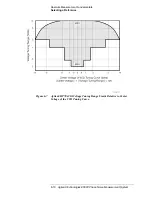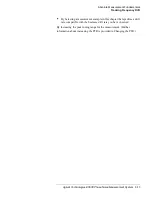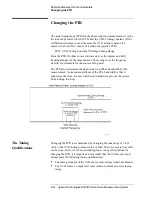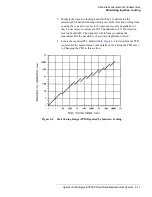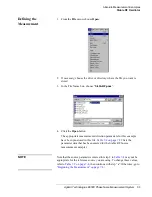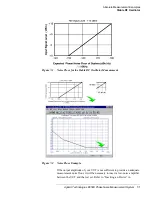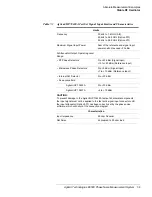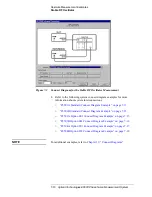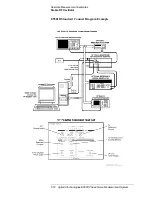
6-20
Agilent Technologies E5500 Phase Noise Measurement System
Absolute Measurement Fundamentals
Evaluating Noise Above the Small Angle Line
Evaluating Noise Above the Small Angle Line
If the average noise level on the input signals exceeds approximately 0.1
radians RMS integrated outside of the Phase Lock Loop (PLL) bandwidth, it
can prevent the system from attaining phase lock.
The following procedure allows you to evaluate the beatnote created
between the two sources being measured. The intent is to verify that the PLL
bandwidth is adequate to prevent the noise on the two sources from causing
the system to lose lock.
If the computer is displaying the hardware Connect Diagram you are ready
to begin this procedure. (If it is not, begin a New Measurement and proceed
until the hardware Connect Diagram appears on the display.)
Determining the Phase
Lock Loop Bandwidth
1. Determine the Peak Tuning Range (PTR) of your VCO by multiplying
the VCO Tuning Constant by the Tune Range of VCO value entered. (If
the phase noise software has measured the VCO Tuning Constant, use
the measured value.)
For Example,
2. Estimate the Phase Lock Loop (PLL) bandwidth for the measurement
using the PTR of your VCO and the graph in
.
Observing the Beatnote
If the beatnote frequency is below XXX kHz it will appear on the
Agilent/HP E4411A RF analyzer’s display in both the frequency domain and
the time domain. If the beatnote does not appear on the RF analyzer, then the
beatnote is either greater than XXX kHz or it does not exist.
If incrementing the frequency of one of the sources does not produce a
beatnote within XXX kHz, you will need to verify the presence of an output
signal from each source before proceeding.
Tuning
Voltage
X
Constant
Tuning
VCO
PTR
====
kHz
V
X
V
Hz
PTR
1
10
100
====
====





